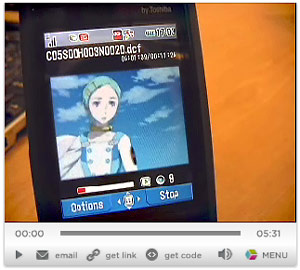Vodafone Japan 3Q Results Released
Extract: Vodafone K.K.’s 3G devices increased by 564,600 in the quarter, bringing the number of 3G subscribers to 2,318,200, whilst market share of 3G net additions remained fairly constant throughout the quarter at just over 10%. Blended ARPU for the quarter was down 3.7% year on year, an improvement from the 5.4% fall recorded in the quarter to September. The continued fall in ARPU reflects the loss of higher value customers in the previous year and competitive pressures on pricing. Blended ARPU for the quarter was down 3.7% year on year, an improvement from the 5.4% fall recorded in the quarter to September. The continued fall in ARPU reflects the loss of higher value customers in the previous year and competitive pressures on pricing. The improved trend is due in part to the positive impact from the new range of flat-rate plans, which are generating additional usage. Service revenue fell 4.5% year on year due to the decline in ARPU. Voice revenues fell 6.2%, with non-voice revenues broadly stable. The improvement versus the previous quarter can be attributed to an improved ability to retain customers, resulting from a better handset line-up and service offering. (WWJ subscribers log in for more details).


 In the 1997 movie
In the 1997 movie  It’s rare for WWJ editors, a jaded bunch, to get too excited about new service announcements, but on 6 December, we jumped on this fresh Vodafone
It’s rare for WWJ editors, a jaded bunch, to get too excited about new service announcements, but on 6 December, we jumped on this fresh Vodafone  Back in 1999, when I was editing Computing Japan magazine, we ran an article entitled “
Back in 1999, when I was editing Computing Japan magazine, we ran an article entitled “